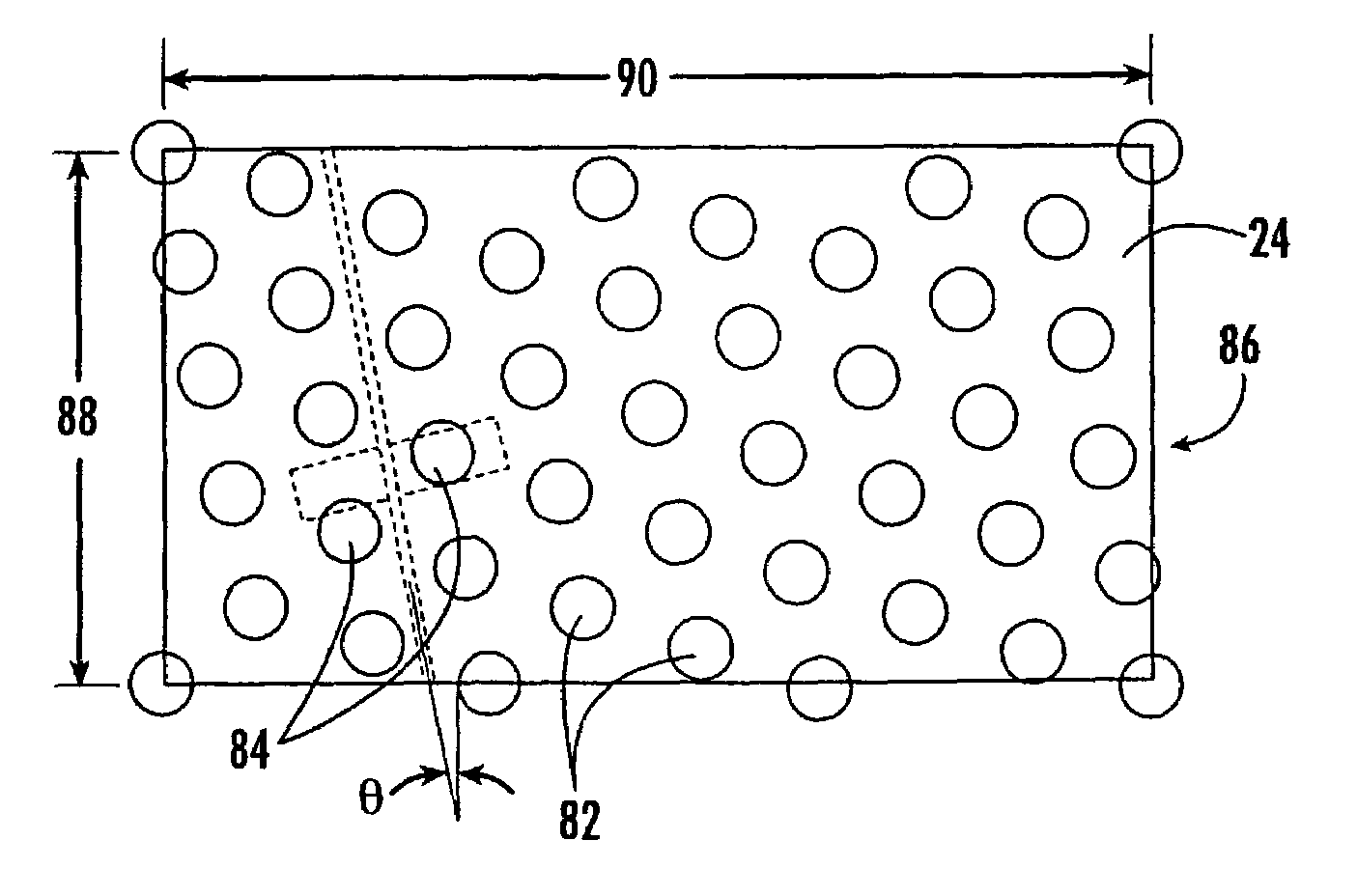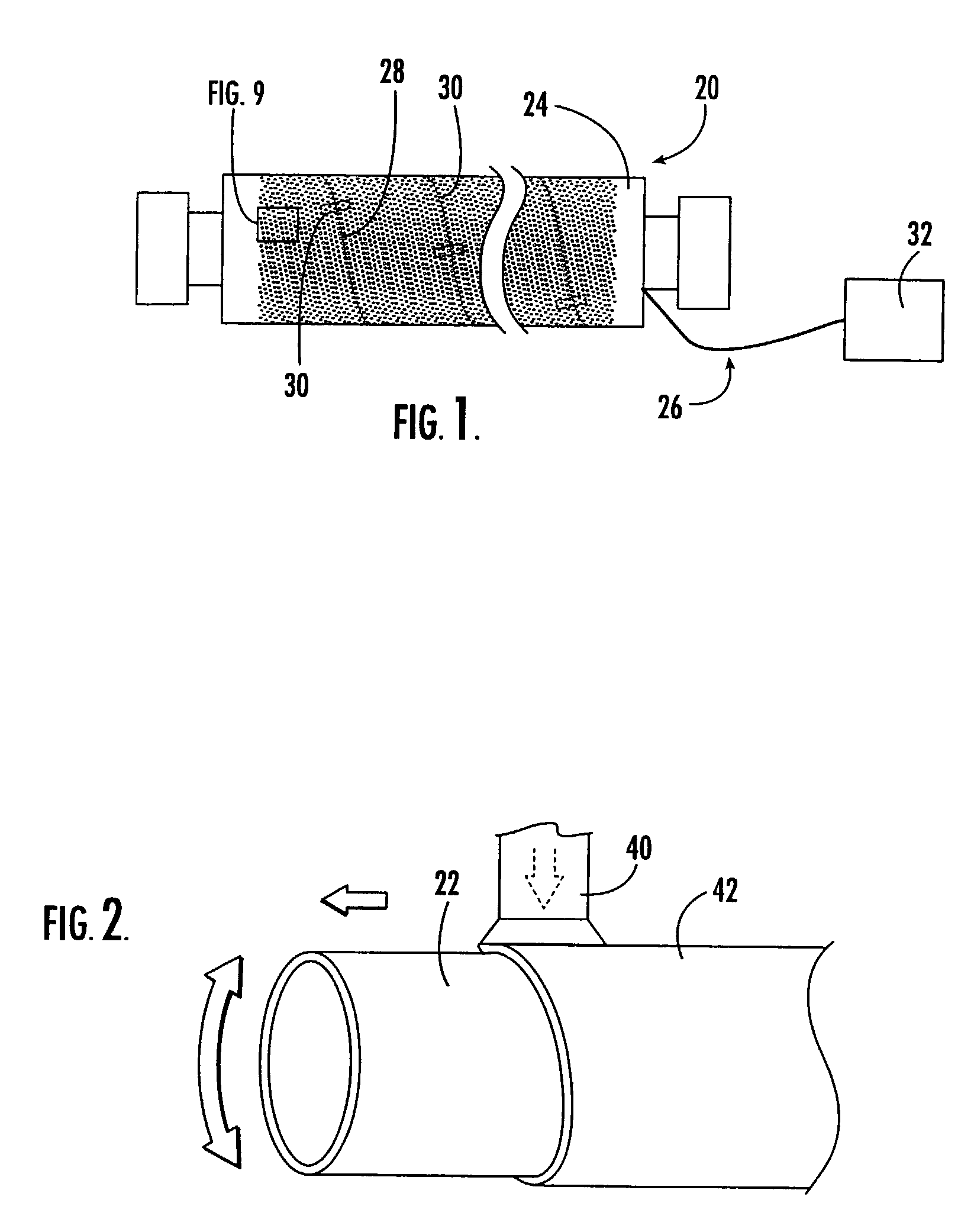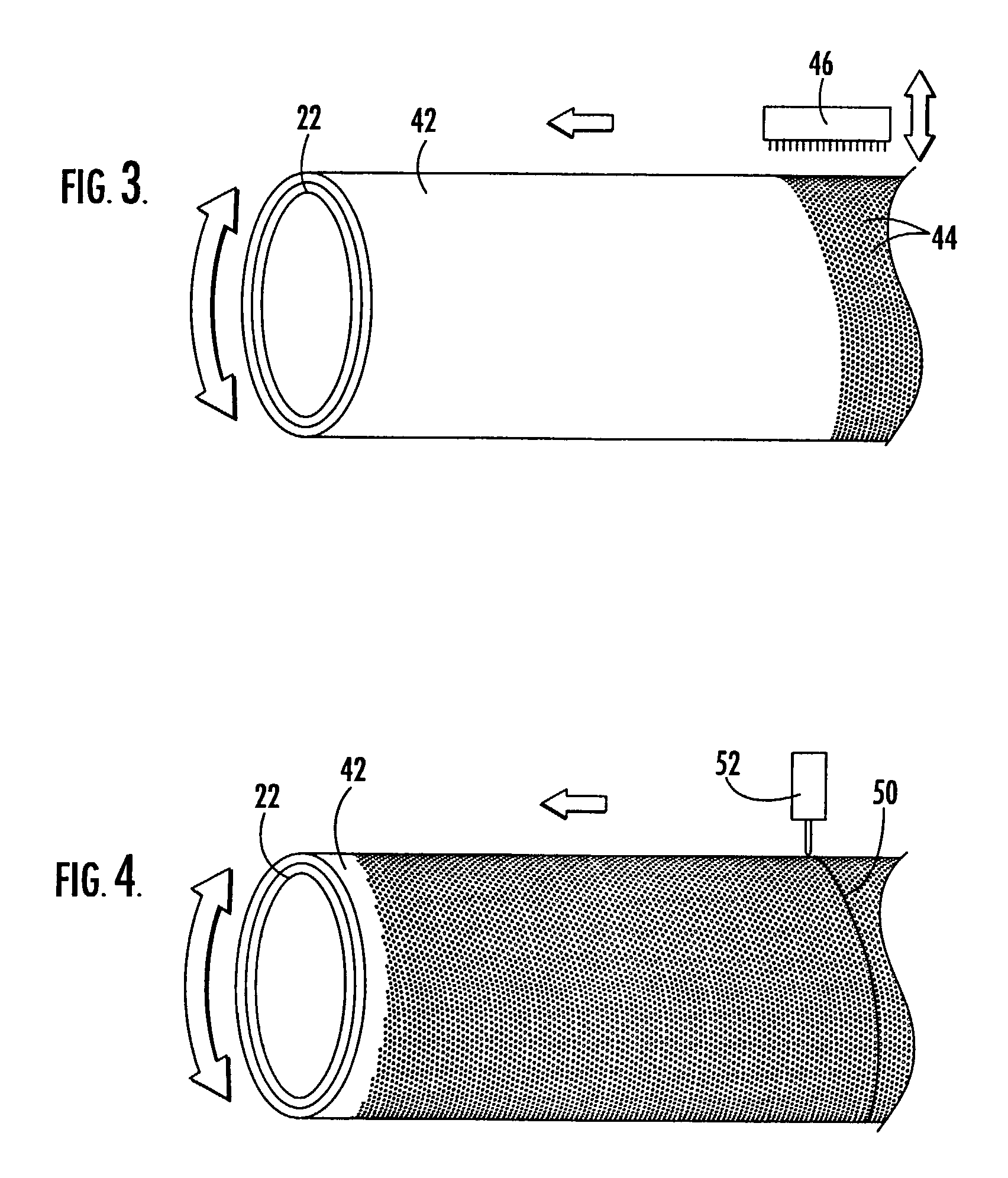Suction roll with sensors for detecting temperature and/or pressure
a sensor and suction roll technology, applied in the field of industrial rolls, can solve the problems of affecting the quality of paper produced with the paper machine, presenting technical challenges that a conventional roll does not, and damage to sensors, so as to facilitate the use of a sensing system
- Summary
- Abstract
- Description
- Claims
- Application Information
AI Technical Summary
Benefits of technology
Problems solved by technology
Method used
Image
Examples
example
[0068]In this example, it is assumed that the roll has the dimensions set forth in Table 1, and that the hole pattern is that illustrated in FIG. 9.
[0069]
DimensionQuantityDiameter36inchesAxial Length of Roll between Outermost238inchesSensorsFrame0.725inchesDrill Spacing1.405inches
[0070]The diameter and frame measurements indicate that the variable N above is 156, and for the hole pattern of FIG. 9, the variable B is 9. Thus, for this roll, Equation 5 yields:
α=0.041z Equation 6
This equation can then be used to calculate axial and circumferential coordinates for sensors.
[0071]If the circumferential spacing is maintained to be the same as a typical roll (usually 21 sensors over a 360 degree circumference, or about 17.14 degrees between sensors), a set of circumferential and axial positions can be calculated (Table 2).
[0072]
Total AngleSimple AngleAxial PositionSensor No.(degrees)(degrees)(inches)10.0000.0000.02377.14317.14325.553754.28634.28651.1041131.42951.42976.6551508.57268.572101....
PUM
| Property | Measurement | Unit |
|---|---|---|
| width | aaaaa | aaaaa |
| angle | aaaaa | aaaaa |
| angle | aaaaa | aaaaa |
Abstract
Description
Claims
Application Information
 Login to View More
Login to View More - R&D
- Intellectual Property
- Life Sciences
- Materials
- Tech Scout
- Unparalleled Data Quality
- Higher Quality Content
- 60% Fewer Hallucinations
Browse by: Latest US Patents, China's latest patents, Technical Efficacy Thesaurus, Application Domain, Technology Topic, Popular Technical Reports.
© 2025 PatSnap. All rights reserved.Legal|Privacy policy|Modern Slavery Act Transparency Statement|Sitemap|About US| Contact US: help@patsnap.com



